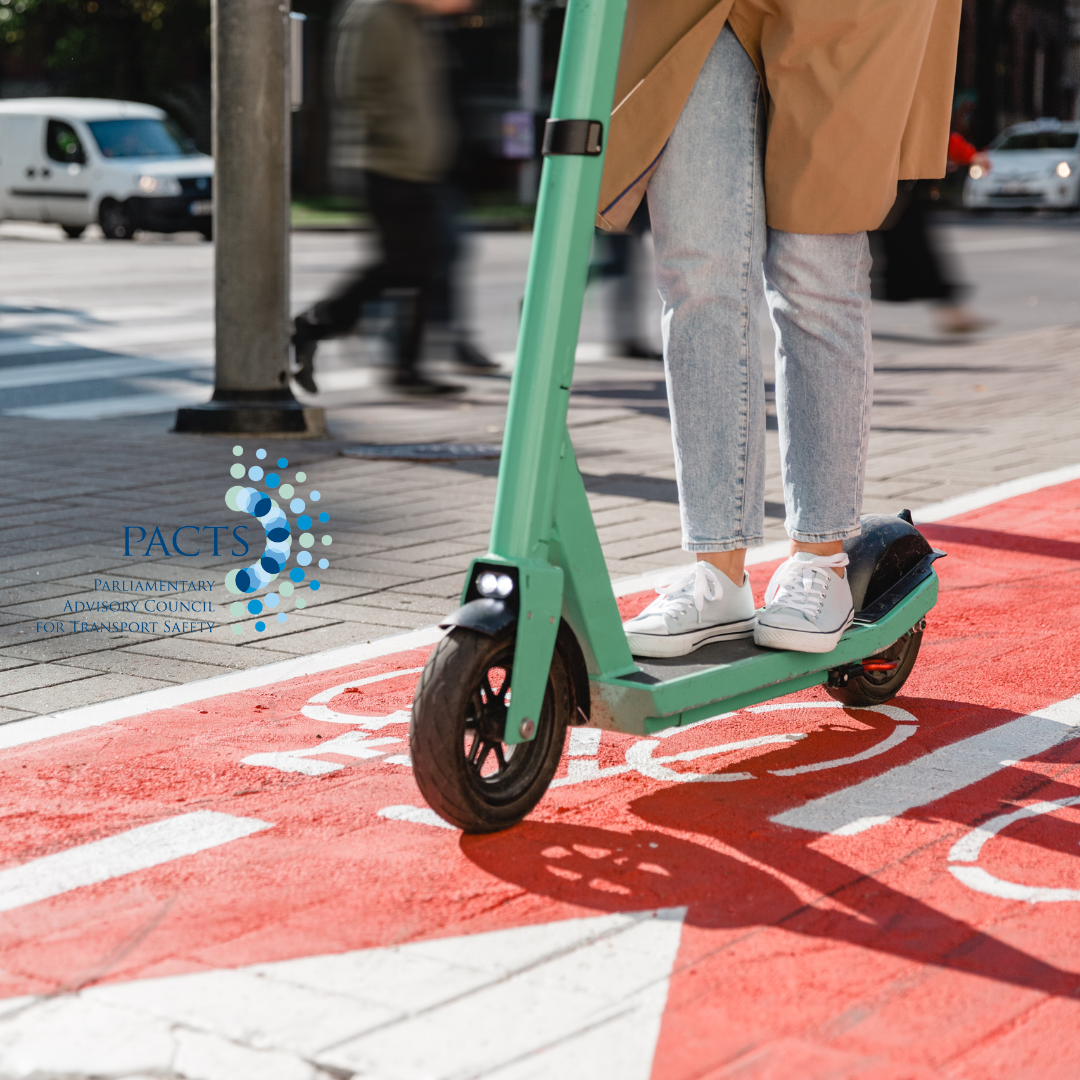As more micromobility options become available, there is an increasing need for regulations to address the new safety challenges they present and to take advantage of the opportunities to increase their sustainability. On 28th March 2023, PACTS (the Parliamentary Advisory Council for Transport Safety) hosted its Spring Conference, themed “Micromobility: Safety and Sustainability”. This covers micromobility in its broadest sense: the pedal cycle (it predates the motor car), the autoped (in use 100 years ago and its appearance matched the modern e-scooter), and the e-cargo bike (replacing diesel vans in urban areas).
There are now more micromobility choices than ever before, with new small, lightweight, zero-emission vehicles coming down the track soon. Each is unique in its operation with different risks and hazards and different sustainability benefits. At the conference representatives from government and industry in the UK and Europe presented their insights and forecasts, echoing the call that clear and specific regulation is needed without unnecessary delay.
Tackling the wild west
Baroness Randerson, peer for the Liberal Democrats, explained that, with an increase in use of micromobility, and e-scooters in particular, the UK is desperately in need of ministerial announcements. However, this legislation may not be passed before the next general election, which could be as late as 2025. The earliest could be in the next parliamentary session, which is not expected to open until November 2023.
In the meantime, we are facing the wild west. Enforcement and education of how to use e-scooters, or even store batteries, is being left to the police, local authorities and fire services. That is despite each already being overstretched. Baroness Randerson called for the government to provide guidance and funding to raise public awareness and encourage safer usage, especially wearing helmets.

e-Scooter safety
In England, regulated rental e-scooters are available to ride legally and the DfT spoke of their evaluation of the first eight months of the government-backed trials. This gives detailed insights into riders’ experiences. By the time the trials are due to end, in May 2024, a further two and half years of data will have made the trials the longest evaluation of any rental trial scheme.
However, private e-scooters continue to be sold and ridden on our roads. The unsafe nature of some of these e-scooters and irresponsible use of some riders needs to be tackled with legislation. TRL, The Commission for Micromobility and Sport and PACTS are all involved in research to understand more. The form of any legislation needs to address key safety priorities: increasing vehicle stability, mandatory wearing of suitable safety equipment, and enforcing against unsafe rider behaviours.

There’s more to micromobility than e-scooters
The invention of lithium-ion electric batteries led to a revolution, the creation of light-weight, zero-emissions micromobility. However TRL explained that was over a decade ago and the changes we see now are more akin to an evolution of previous ideas. In the 1920s an autoped was petrol powered. The e-scooter looks the same but is electrified. Improving the stability of the two-wheeled vehicle remains a challenge.
Safety and other policy areas are encouraging the evolution. The Bicycle Association explained the benefits of an electric bike. The addition of a battery to a pedal cycle means a rider can travel further and carry a greater load. As regulations require the bike to be pedal assisted, riders can still take advantage of active travel benefits. Acceleration is limited by the rider’s pedal power and the motor cuts out at 15.5mph. e-bikes are associated with a non-e-powered bike and therefore share many of their safety regulations.
Targets for reducing emissions and congestion as well as economic drivers to improve the efficiency of journeys mean there are now a broad range of micromobility providing different services. Zemo explained now users can choose the right vehicle for the right journey, from electric mopeds to larger cargo bikes. UPS have a fleet of narrow, agile cargo bikes to make city centre deliveries. Many are in the form of mini-vans which can carry 50-90 packages in their 2m2 storage.

Opening up the possibilities
The extent of use of the full range of micromobility in the UK is still limited. Primary legislation, in the form of the Transport Bill, should push the green light for the creation of a regulatory framework for smaller, lighter, zero-emission vehicles. When it is it created it must be broad enough to allow the development of new technology. Any secondary legislation needs to be vehicle-specific and user-friendly.
In the Netherlands their proposals are for regulations which are predictable, proportional and unambiguous for consumers, manufacturers and road management authorities. Safety is prioritised including a requirement for training. They also make the realistic expectation that existing infrastructure will be used.
In the UK we need to accept that it is going to be many years before extensive segregated provision will be made. Legislation prioritising the safety of construction and the use of micromobility should be more achievable and more quickly delivered. We are just waiting for the Government to do something about it.




